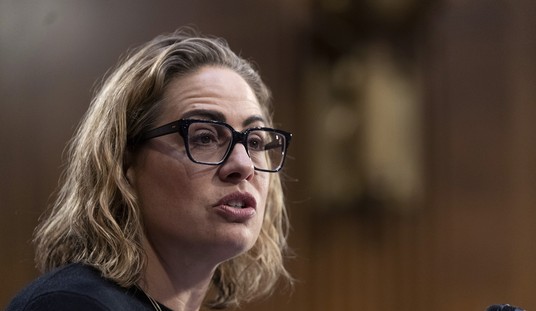Earlier this summer, we watched the unexpectedly high-drama saga of the “farm bill” play out in Congress, and when lawmakers reconvene next week, it’s going to be a major action item that the leadership will want to wrap up before the current legislation expires at the end of September — even as the looming budget battle and the Syria debacle will probably occupy a lot of attention.
Here’s your refresher course on the pending status of the new legislation, as succinct as I can make it: The “farm bill” has traditionally contained both “agriculture policy,” ahem, and the outline for the federal Supplemental Nutrition Assistance Program (i.e., food stamps) — the deliberately omnibus design usually helps to ensure the passage of both urban and rural interests’ favored programs and protect the status quo. The budget for food stamps has more than doubled in just five years, but the Senate passed a renewed version of the farm bill that made only the most miniscule, practically nonexistent spending cuts possible to the food stamps program (read: an oh-so-brave and far-sighted $400 million/year out of an annual budget of now almost $80 billion). The House then took their turn at crafting matching legislation, and came up with a version that dared to make the wildly draconian cut of $2 billion a year, gasp, to food stamps. The White House immediately shot the idea down, but the issue suddenly and dramatically became moot when the House itself rejected the omnibus package with bipartisan opposition. Out of nowhere, lawmakers where suddenly talking about divorcing “agriculture policy” and food stamps into two more transparent bills, and for one brief, shining moment, it looked like we might get both some serious and reasonable cuts to both food stamps and the egregious corporate welfare divvied out to the agriculture sector and their many lobbies… But then, House Republicans voted through the agriculture portion as a single bill without really reforming our market-distorting and pork-tossing agricultural programs much at all, and we’re still waiting for the House version of a bill for the food stamp program.
Whew. Anyhow, the Washington Post reported last week that the passage and precise details of a food-stamp bill are still in legislative limbo, but no matter what the House comes up with, we can assuredly expect plenty of demagoguery and demonization from the Democrats about how Republicans must just really hate poor people, because there is absolutely no other possible explanation for proposing such silly ideas as fiscal responsibility. I’m sure we’ll be seeing references to this new study just released from the USDA, ensconced in the obligatory New York Times story:
On Wednesday, the Department of Agriculture released a 2012 survey showing that nearly 49 million Americans were living in “food insecure” households — meaning, in the bureaucratic language of the agency, that some family members lacked “consistent access throughout the year to adequate food.” In short, many Americans went hungry. The agency found the figures essentially unchanged since the economic downturn began in 2008, but substantially higher than during the previous decade.
Hmm. According to the study, an estimated 14.5 percent of households were food insecure at at least some point during 2012, while the prevalence of “very low food security” was unchanged from 2011 at 5.7 percent. To clarify, the USDA’s definitive dichotomy of food insecurity consists of “low food security,” meaning “reports of reduced quality, variety, or desirability of diet” with “little or no indication of reduced food intake,” while “very low food security” refers to “reports of multiple indications of disrupted eating patterns and reduced food intake.” I suspect that the NYT’s “49 million Americans living in food insecure households” is meant to sound a good deal more drastic than it actually is, but that isn’t even my point here. There is unquestionably a lot of very real material hardship through which far too many Americans are fighting right now, and the almost seven million households struggling in the “very low” category is certainly way too many. As the NYT so aptly points out, however, “the figures are essentially unchanged since the economic downturn began in 2008, but substantially higher than during the previous decade.”
Real-world translation: The Obama administration’s agenda and the subsequent Obama economy is shrinking household incomes, shrinking labor force participation, and growing our GDP at only a stagnation-level rate, which is exactly why food-stamp enrollment has skyrocketed and there are so many more food-insecure households. Republicans do not want to do away with food stamps: They want to engender a robust, wealthy, and inclusive economy in which people neither want nor need food stamps because there are so many more attractive opportunities. The path to creating said economy does not include throwing around more money we don’t have in a wildly misguided attempt to cover up the symptoms of the problem and ignoring the actual disease.
In related news, this just happened, via Breitbart:
Arizona authorities have broken up a massive food stamp fraud ring in Phoenix and seized almost $700,000 in cash.
K&S convenience store workers Kameel Sweiss, Ameer Sweiss, and Faday Sweiss were arrested on Wednesday on charges of suspicion of illegally conducting an enterprise, fraudulent schemes and artifices, money laundering, unlawful use of food stamps, and computer tampering.
“People were essentially selling their cards to [the] store,” said spokesperson Stephanie Grisham.
Arizona Attorney General Tom Horne says the bust is the fifth of its kind this year and that this is the largest to date.







Join the conversation as a VIP Member